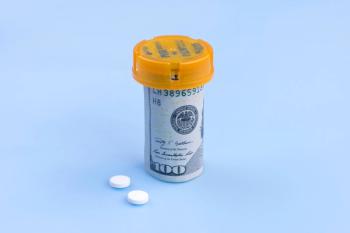
The OTC Guessing Game: When Is It Time to Adjust Prices (and by How Much)?
Independent pharmacy retail pricing may seem like a moving target, but there are several tactics you can use to improve your accuracy when it comes to how to price your OTC products.
Fact-based decisions often go out the window when independent pharmacies establish retail pricing for OTC products. Dealing with multiple suppliers takes valuable time, leading many owners to default to putting goods on their shelves at vendors' suggested pricing
—
and if it sells, it sells.
Alternatively, you may do your research and find that a chain store is selling a 25-count bottle of Zyrtec liquid gels for $20. Since you’re selling the same product for $25, this may lead you to assume (incorrectly) that pricing for your front-end merchandise is too high by 20
%
percent
.
So, how do you go about setting front-end prices in your pharmacy? Admittedly, there's no one-size-fits-all method. However, a best-practices approach to independent pharmacy retail pricing will point you toward increased profitability.
Take Action on Pricing
The following recommendations provide a variety of options on how to price your OTC products:
Don't sell the front end short.
Sure, you feel confident in the pricing of your prescription medications, and the vast majority of your business comes from behind the counter. However, that doesn't mean you should write off the front end as merely a collection of impulse buys. You pay for the space allocated to your front-end in terms of rent, payroll, marketing, and all the other expenses that go into running the department. It’s important that you have a plan to recoup those expenses
—
—
and even turn a profit
—
—
by taking advantage of the fact that OTC products generate immediate cash without having to deal with the hassles and time delays of insurance reimbursement.
Monitor the competition.
- Until you understand what your competitors are selling and their estimated margins, you can't really formulate an opinion on setting front-end prices in your own pharmacy. Send a technician out to direct competitors within a three3-mile radius of your store at least once per quarter to gather pricing on OTC generics and brand-name medications. You’ll get a general sense of pricing patterns by looking at just a few items within a category (e.g., acetaminophen/Tylenol, ibuprofen/Advil and an external analgesic such as lidocaine/Aspercreme). Then you can use this information to determine where you stand in the marketplace in regard to pricing and be intentional with your pricing decisions moving forward, whether you choose to match your competitors or set your prices a little higher as described earlier.
Designate a front-end captain.
- The old adage, “If it's everybody's job, it's nobody's job," rings especially truerings for the front end. Appoint a trusted staffer to take charge of keeping the front end clean and well-organized, with properly promoted products in the right spots. The front-end captain should also take responsibility for verifying the true acquisition cost of all OTC items by comparing incoming invoice pricing against product pricing in your point-of-sale (POS) system. That may sound like a excessive time commitment, but it actually only takes about 20 minutes per day in a typical pharmacy and can immediately flag any POS data-entry errors. By making this a daily front-end process, you'll avoid having a product ring up at the register with a different price than what was labeled on the item or shelf.
Work with your wholesaler.
- If you're more inclined to outsource pricing activities, ask your wholesaler about any programs they have to help with retail pricing for OTC products. For example, some wholesalers offer zone pricing programs that can analyze your location and surrounding businesses to set OTC prices at a percentage markup appropriate for your retail environment. Similarly, your wholesaler is also likely tracking the latest trends in OTC products and can regularly send pricing updates that you could upload to your POS to instantly apply changes across your entire front end.
Get in sync with seasonality.
- Vendors know the peak times for seasonal product sales and stand ready to help you with promotion. They offer planograms and special displays that can help you be properly stocked about a month before the associated season (e.g., cold/flu) starts. Take advantage of the marketing dollars being spent by vendors on your behalf.
- Review your pricing regularly. Every independent pharmacy front-end pricing strategy must require ongoing vigilance for it to work. You can't expect positive results by merely setting prices and doing one-off adjustments as they arise. Meet with your front-end captain at least quarterly to evaluate how much product you're selling and how much margin you're making. In doing so, you'll identify potential issues — such as selling $2,500 in a certain category last quarter, compared withto $1,000 this quarter — and set the stage for potential remedies like implementing a new planogram or introducing new products.
COVID-19 Implications
Pharmacies continue to face evolving challenges amidst the ongoing
coronavirus disease 2019 (
COVID-19
)
pandemic. Nonetheless, it's also been a period of great reflection, especially for independent pharmacy retail pricing. Reduced foot traffic in stores has caused many owners to realize how much profit they previously generated from their front end. In response, they've taken advantage of the opportunity to spruce up their OTC area, preparing to welcome back consumers to a more attractive shopping experience at the appropriate time.
Some are making the most of their physical layout by building private consultation rooms that can also double as space to administer tests and vaccines.
Your options are limited only by your creativity. Consider, for example, fielding a call for a prescription refill and offering the following: “We're happy to be your personal shopper for any OTC items you may need. We'll have your medication and other products ready for pickup in our drive-
thru
thr
ough
or at curbside. Would you like to hear what items are included in our latest weekly sale?"
Until we return to a normal economy, think in terms of bringing your OTC products to the consumer instead of waiting for the consumer to come to you. Make it easy for patients to shop your website. If
necessary, consider partnering with third-party companies to bring your market-basket and delivery services up to speed.
Keep your front end humming with a thoughtful approach to managing prices, rather than trying to sell everything as cheaply as possible. Leverage the skills of your front-end captain and take advantage of wholesaler and vendor programs that can serve as a “second set of eyes" on pricing trends and promotional opportunities in your market. While there's no silver bullet to OTC pricing, you can hit your targets and stay ahead of your competitors by tapping the right resources and remaining vigilant.
Still unsure about setting front-end prices in your pharmacy?
If your independent pharmacy front-end pricing strategy feels overwhelming, it might be time to enlist the help of a
Good Neighbor Pharmacy
who can set you up with the right programs to ensure your pricing is always on point. Not only will you get personalized guidance on how to price your OTC products in the current environment, but you’ll also receive price file updates based on the latest trends in retail pricing for OTC products to keep your front end constantly up to date.
Newsletter
Pharmacy practice is always changing. Stay ahead of the curve with the Drug Topics newsletter and get the latest drug information, industry trends, and patient care tips.















































































































